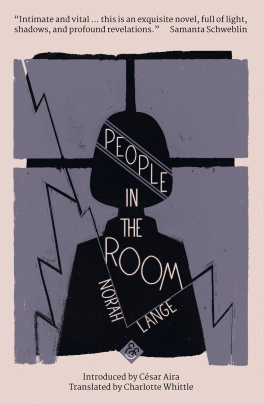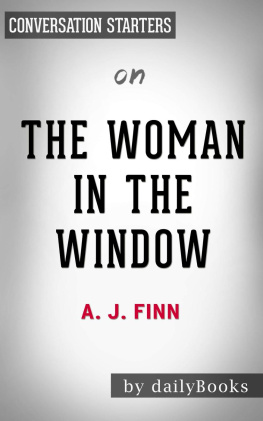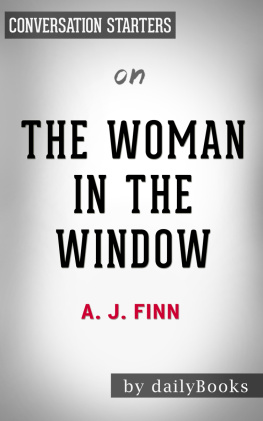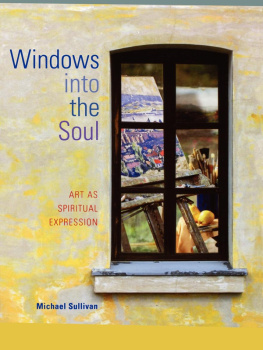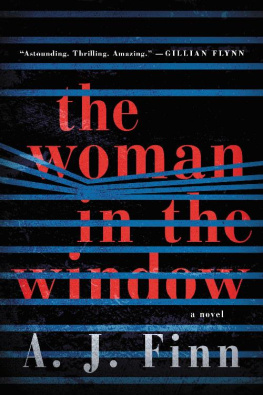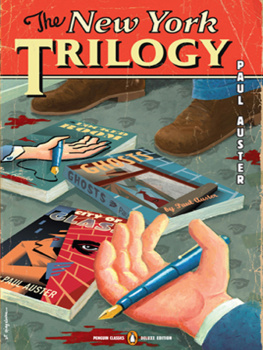First published as Personas en la sala in 1950 by Editorial Sudamericana, Buenos Aires.
A version of Csar Airas introduction was originally given as a lecture held at the House of Literature in Oslo in 2016.
All rights reserved. No part of this publication may be reproduced, stored in a retrieval system, or transported in any form by any means (electronic, mechanical, photocopying, recording or otherwise), without the prior written permission of the publisher of this book. The right of Norah Lange to be identified as author of this work has been asserted in accordance with Section 77 of the Copyright, Designs and Patents Act 1988.
This book is a work of fiction. Any resemblance to actual persons, living or dead, events or places is entirely coincidental.
Editor: Arabella Bosworth; Proofreader: Sarah Terry; Typesetting and eBook: Tetragon, London ; Cover Design: Roman Muradov.
A catalogue record for this book is available from the British Library.
This work was published within the framework of the Sur Translation Support Program of the Ministry of Foreign Affairs, International Trade and Worship of the Argentine Republic. Obra editada en el marco del Programa Sur de Apoyo a las Traducciones del Ministerio de Relaciones Exteriores y Culto de la Repblica Argentina.
Introduction
The circumstances of Argentine women writers in the first half of the twentieth century were not politically correct. Political incorrectness, in this case, meant that women writers were limited to the conventionally feminine subject matters of home, children, marriage, and family. Also politically incorrect was the fact that the women writers who limited themselves to such topics were the best of their time, while those who made laudable attempts to break the mold by daring to write about masculine subjects such as history, politics, and society, did not surpass mediocrity. Perhaps the correct strategy for women writers, at least in literary terms, was to be the former: to accept the clich and hide behind it, subverting it from within. In the work of Silvina Ocampo and Norah Lange, in my view the most remarkable of these writers, traditionally feminine subject matter is excavated so deeply that something entirely different emerges.
Ocampo and Lange have much in common, all of it politically incorrect: both were married to famous writers who were also wealthy and whom they worshipped like gods; both belonged to the same closed upper-class social circle in Buenos Aires, and both were closely connected to Borges, except that, as Norah joked, one was married to his best friend and the other to his worst enemy. And both were eccentric, as wealthy women can get away with being.
Norah Lange was born in Buenos Aires, in the present-day neighborhood of Belgrano, at the time a leafy suburb full of large, well-appointed houses. In one of these houses, on Calle Tronador, lived the Lange family. Norah was born in 1905, but after she married Oliverio Girondo, each officially changed their respective birth dates to one year laterNorah to 1906, and Girondo, who was born in 1890, to 1891. Clearly, they did not do this to appear more youthful, since it was a difference of only a yearin addition to which, they made it public knowledge. It seems to have been a kind of magical, Kabbalistic pact between the couplea second birth.
Norah was one of nine children, six of whom survived infancy: five girls and one boy. Her parents were Gunnar Lange, a Norwegian immigrant, and the Argentine-born Berta Erfjord, daughter of a Norwegian father and an Irish mother. Her fathers given name and her mothers last name together provided the name of Gunnar Erfjord, a character in Borgess story Tln, Uqbar, Orbis Tertius. Norah and Borges were distantly related; one of Berta Erfjords sisters had married one of Borgess uncles; it was Guillermo Juan Borges, a child from this marriage and a poet who signed his work Guillermo Juan in order to distance himself from his famous cousin, who first took Borges to visit the Langes.
Norah always maintained her connection with Norway. At nineteen, she traveled to Oslo to meet her new niece, the daughter of her sister Ruth, who had married a Norwegian. She returned in 1948, this time with her husband. During the Second World War and the occupation of Norway, she wrote the anti-Nazi articles The Slandering of the Norwegians, and Norway Under Foreign Oppression (both in 1940), for the Buenos Aires anti-fascist newspaper, Argentina Libre .
The Langes spent six years living in the provincial city of Mendoza, in the Andean region of Argentina, until Gunnar Langes death in 1915. This period is described in Langes memoir Notes from Childhood , which goes on to tell of the house in Buenos Aires, to which Berta Erfjord and her six children then returned, suffering considerable economic hardship. Despite this, the house on Calle Tronador soon became the setting of lively gatherings of writers and artists. The one Norah most admired was Borges, whom she considered her first teacher, and who introduced her to poetry. Undoubtedly inspired by the atmosphere of the house, the young Norah began to write poems with greater energy, and in 1925, when she was twenty, she published her first book of poetry, La calle de la tarde ( The Street at Dusk ) under her original name, Nora, without the h. A curious convergence of names: the book was published with a foreword by Borges, and illustrated by his sister, Norah Borges, that is, Norah with an h. It was Guillermo de Torre, Norah Borgess husband, who suggested Lange add the h to her name: according to him, those two bland, unmysterious syllables needed a final flourish to give them some personality.
Norahs early poetry is everything one might expect from this youthful undertaking; she emulated the poetry her friends were writing, and her work bore the mark of Borgess influence. Her poetry, while well composed, has the air of an impressive piece of homework, written to please the teacher, in this case Borges and the other ultrasta poets who often visited Norahs home. The poems are precocious. Precociousness, more than a circumstance, is in fact their very subject matter. As soon as she grew out of it, she stopped writing poems, and, later in life, she renounced them.
Lange also renounced her brief epistolary novel, Voz de la vida (Voice of Life) , which she published in 1927 against the better judgment of her friends. The novel can be explained by the fact that around the same time, Norah had met and fallen in love with Oliverio Girondo. But Girondo soon left for Europe on a trip that would last years, and Norah said later that she wrote to him every day. The novel, which in fact was written prior to Oliverios travels, consists precisely of letters written by a woman to her distant love.

